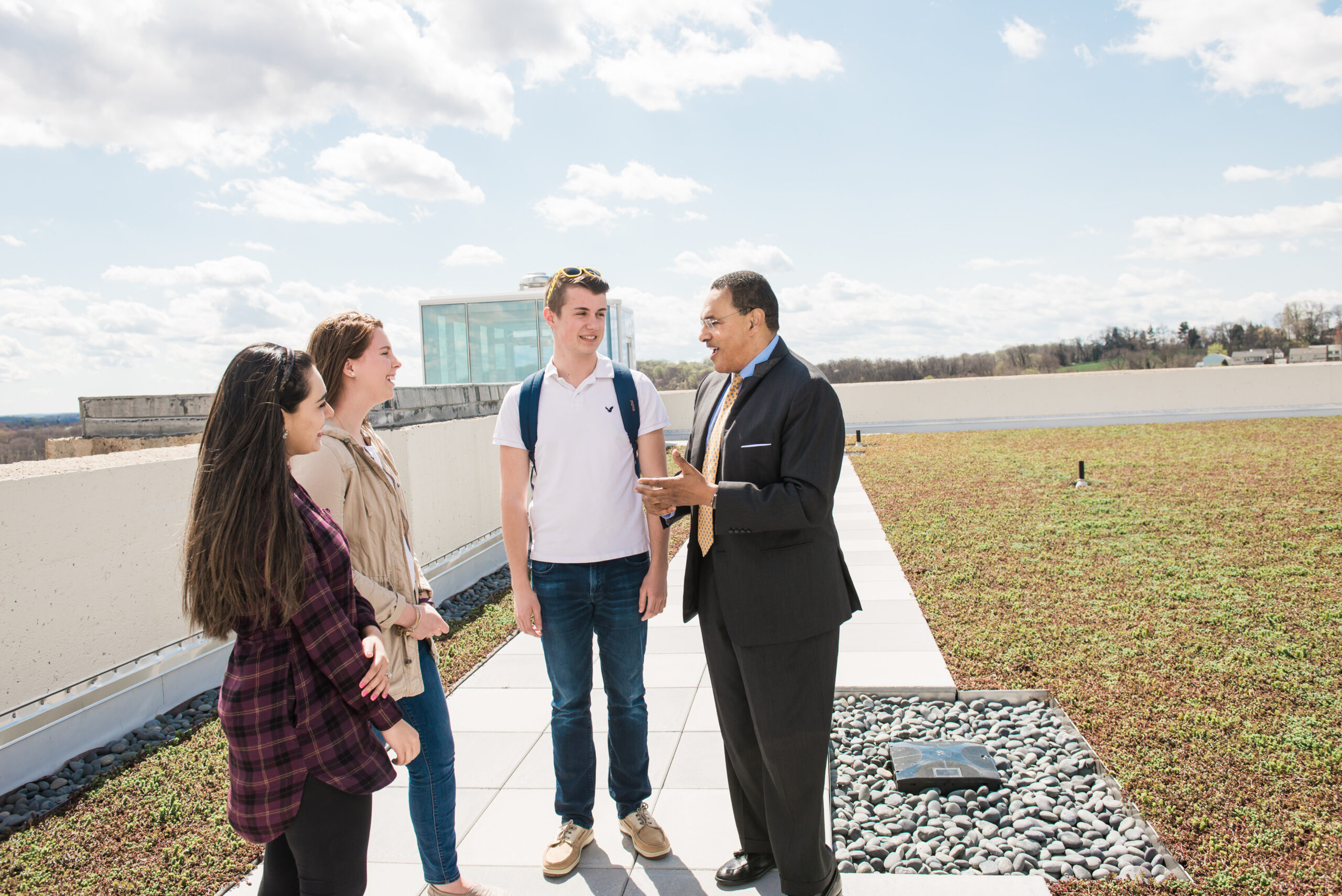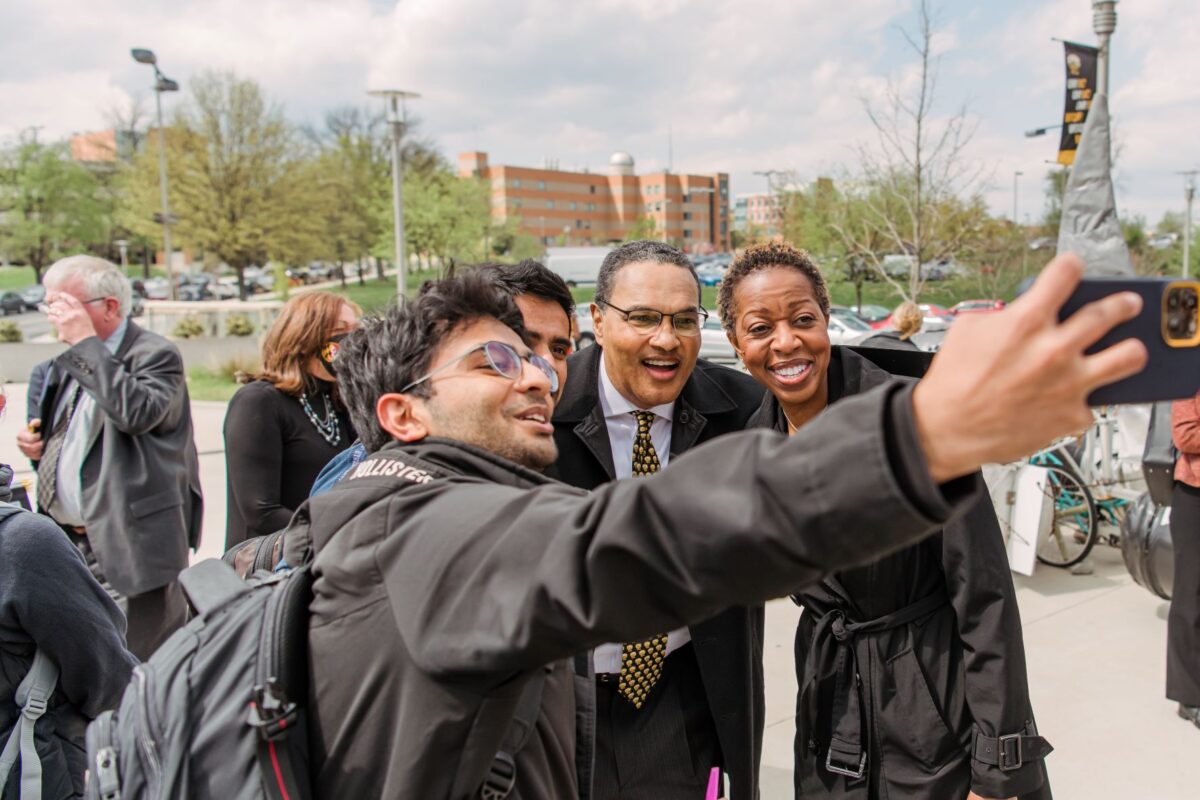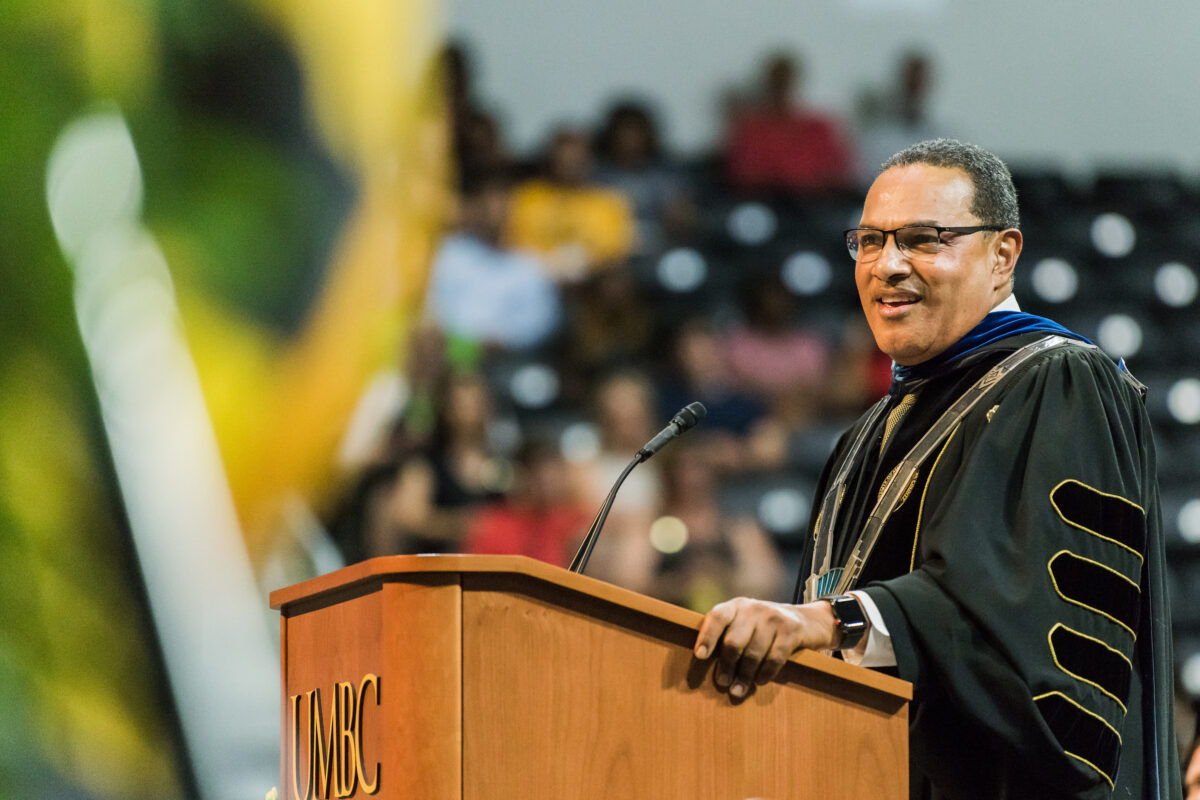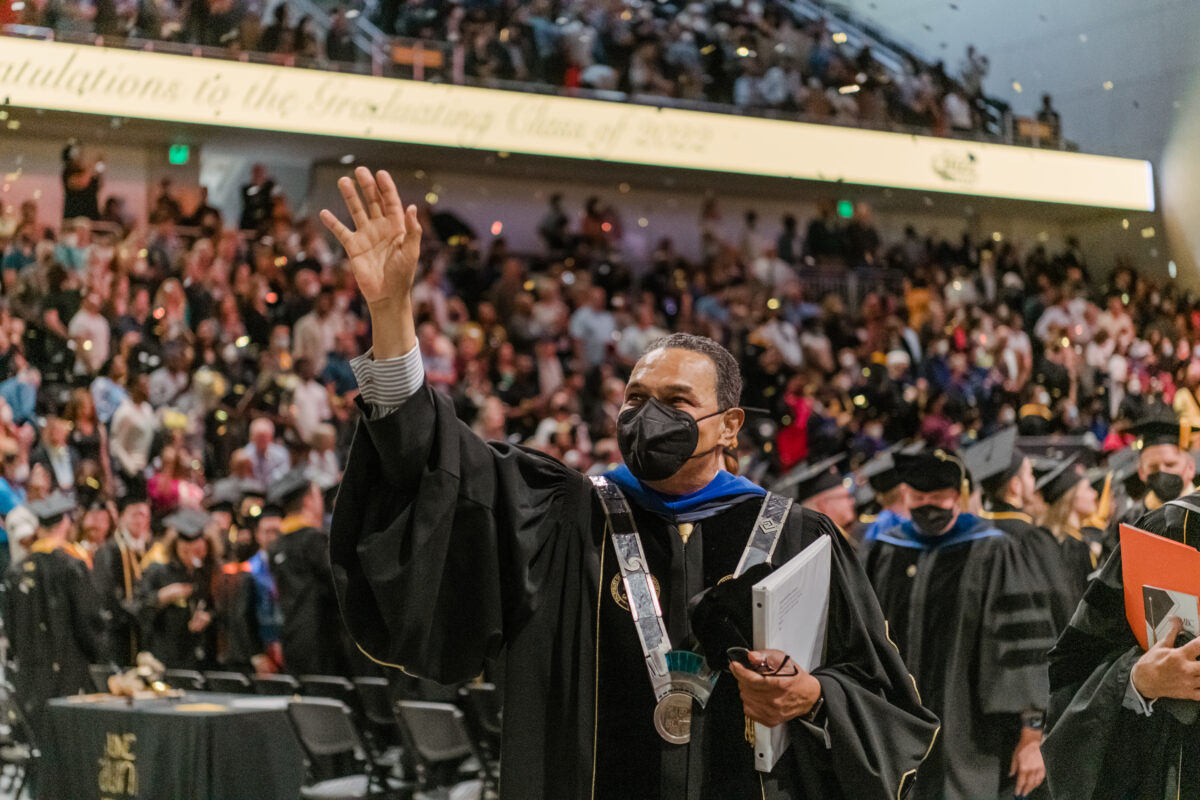UMBC’s commitment to sustainable environmental practices and the health of the Chesapeake Bay is the focus of “Stewardship in Practice,” an article in the spring 2016 issue of Save the Bay, the magazine of the Chesapeake Bay Foundation.
“From the beginning, we emphasized the importance of being good stewards of the environment,” writes President Freeman Hrabowski, recalling how UMBC got its start as a contemporary campus built on 500 acres of farmland. “Our students, faculty, and staff have collaborated for years on greening initiatives and groundbreaking sustainability research.”
Hrabowski signed the American College and University Presidents Climate Commitment in 2007 along with 330 other college presidents nationwide. Since then, UMBC has reduced its greenhouse gas emissions by 16 percent, “even as our campus community has grown substantially,” he writes. The university now also gets 20 percent of its energy from wind and solar.
The article highlights several notable elements of UMBC’s physical plant, such as stormwater ponds, a rainwater harvesting system, pervious pavers, and three green roofs, including one recently installed on the administration building. “This one happens to sit directly above my office,” writes Hrabowski, “and I cannot contain my excitement about it.”
Recycling and composting programs are growing, and 15 student “eco-ambassadors” help organize the annual “RecycleMania” and other sustainability-focused projects and awareness campaigns. Eco-ambassador Elias Weston Farber ’17, political science and environmental science, explains, “We are working to take on the daunting challenge that climate change and environmental injustice pose to humanity through increasing awareness, investing in research, and transitioning to more sustainable infrastructure.”
Hrabowski supports the work of Farber and other UMBC students to take environmental health seriously—to understand it in a broader context and take positive steps to mitigate our environmental impacts.
“Today, 16,000 people live and work on campus, and we recognize that our actions, or inactions, are tied directly to the health of the Chesapeake Bay,” he writes. “To protect our environmental health while educating future leaders is truly something to be treasured.”
Image: President Freeman Hrabowski and students on the Administration Building green roof, spring 2016. Photo by Marlayna Demond ’11 for UMBC.




